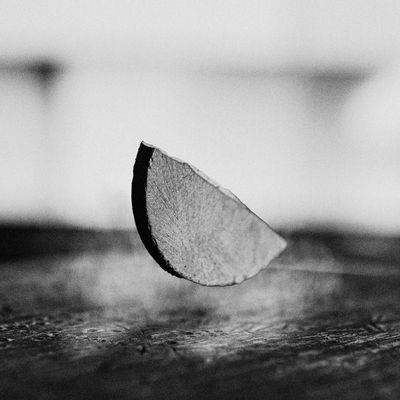
In theory, science is an entirely rational and transparent undertaking. Scientists gather data, form hypotheses, and then collect more data to find out which hypothesis is correct. That’s the idea, anyway. In practice, real-life science is messy and often opaque. Data can be ambiguous. Scientists can be bull-headed. The process of shifting consensus has always been as much about politics and intellectual fashion as about theory and data. Now throw in social media, fanboy culture, preprint archives, and virality — you have a world that breeds all kinds of oddities that can pop up, disappear, and reemerge like quantum virtual particles. All sorts of wild discoveries are bouncing around the information ecosystem before any peer-reviewed journals are able to sort out whether they’re real. And scientists aren’t even all on the same page as to whether this is a good thing or not.
An iteration of flash-mob science erupted last summer, when Twitter users began hyping the work of a South Korean team that said it had discovered a material that was superconductive at room temperature and pressure. Bolstering the claim was a video showing a chunk of material partially levitating. As we reported at the time, if the findings were replicated, it would have massive practical implications for things like levitating trains and quantum computing.
Then the story collapsed. After numerous teams around the world jumped in to try to replicate the study, they found that the material — a crystal of copper, lead, and phosphate called LK-99 — appeared to not be a superconductor after all; its strange magnetic effects were probably caused by a more mundane phenomenon called diamagnetism. “Many things are diamagnetic: plastics, graphite, humans,” says Leslie Schoop, a professor of chemistry at Princeton. “There is a famous experiment where they made a frog float over a giant magnet.” Within a week, the story faded.
Or did it? Not everyone had given up hope. In China, several teams were working with a similar material, called copper-substituted lead apatite, that had a similar chemical formulation to LK-99. This month they released a paper onto the preprint server arXiv in which they reported that while it didn’t superconduct at room temperature, it showed evidence of doing so at temperatures that could be achieved by a normal household freezer, which itself would be a huge breakthrough. Twitter was abuzz once again.
“The two Chinese labs working on replicating LK-99 appear to have found a room-temperature superconductor,” wrote Christian Keil in an X post that garnered 4.1 million views. “It’s more like ‘room temperature’ than room temperature, the paper says 250K which is -10 F or -23 C. That’s still HUGE IF TRUE.”
Andrew McCalip, a California-based engineer whose DIY efforts to replicate LK-99 last year were covered in Wired magazine, posted a photo of a voltmeter with the needle pointing to “We’re So Back.”
Many scientists who study superconductors for a living rolled their eyes at the reappearance of extraordinary claims about LK-99. Peter Armitage, a professor of physics at Johns Hopkins, says there is no reason to think that these materials show any promise. “The chance that they have found something to do with superconductivity is almost zero. Based on prior knowledge, I would expect that house lint would have the same likelihood to be a high-temperature superconductor as LK-99,” he says. “The original motivation was flawed, the experimental work was sloppy, and upon inspection the prior data showed no evidence for superconductivity at all. So why would we expect anything interesting to occur in this class of compounds? I think this work should be just completely ignored.”
“So far most scientists (including me) have been quiet on Twitter as to us it is pretty obviously nothing,” says Schoop. “There is no good reason to suspect that this class of materials has any promise for high-temperature superconductivity based on the data I’ve seen.”
But not everyone is so pessimistic. “It’s a really interesting result,” says Sinéad Griffin, a theoretical physicist at the Lawrence Berkeley National Laboratory. “It seems to be two independent teams that came together and had similar results. My experimental friends say their work is good quality. The one thing is that it needs to go through peer review and to be replicated.”
Asked what her gut feeling is about whether the superconductivity claims will pan out, Griffin responds: “I almost sound like a crazy person when I answer this, but I think it is a superconductor. I just say that it’s very, very hard to synthesize.”
One reason that respectable researchers can hold such different ideas is that the field remains full of unanswered questions. At very low temperatures, within a few degrees of absolute zero, the phenomenon of superconductivity is fairly well understood. According to quantum physics, electrons can merge together into a kind of distributed mutual identity called a Cooper pair. This shared identity can connect countless quadrillions of electrons into a single entity, which can carry a current without any loss of energy. Something similar must occur in higher-temperature superconductors as well, but no one has yet come up with a theoretical mechanism to explain it. That means it’s not yet possible to create a superconducting material from first principles the way, for instance, a drug company might try to create a medicine by building a molecule that will work in a known biochemical pathway.
“New classes of superconductors are most often found by accident; they are rarely previously predicted. And sometimes, the mechanism for superconductivity is completely different from our previous understanding,” says Schoop.
One major class of well-studied superconducting compounds are copper-oxide ceramics, which were discovered in the ’80s. To this day the mechanism by which they work isn’t well understood. “People thought there was an upper limit for the temperature at which superconductivity can appear, and then copper-oxide ceramics blew through this by a lot,” Schoop says. “So we can never rule out that a room-temperature, ambient-pressure superconductor can be found, but we don’t have very good ideas where to look for it.” There is at present no theoretical upper limit on the temperature at which a solid can be superconductive.
While some researchers lament the social-media frenzies that erupt over unvetted work posted onto arXiv and the like, others feel that the sheer speed with which new discoveries can spread make preprint servers worth the occasional annoyance. “There is a problem with overhyping things that are not peer reviewed,” says Griffin. “But there are severe issues with peer review as well. My longest peer-review process was two and a half years. So we just can’t rely on peer review to make rapid progress whatsoever.”
Given the huge gaps in our current understanding, it’s entirely possible that one or more materials exist that will superconduct at room temperature and pressure, but the only way that anyone will find them is through a combination of patience, perseverance and luck. That means that one day a research team from some little-known corner of the world may very well publish a report on a preprint server claiming to have made a world-changing discovery—and it will turn out to be true.






























